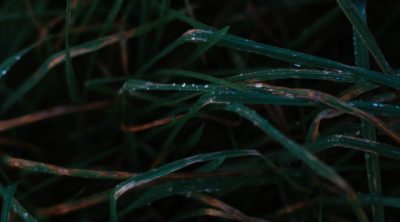Weeds in the north are different from weeds in the south. The most common Texas weeds are going to be managed much differently than weeds you might find in, say, the Pacific Northwest.
This article addresses and identifies some of the most common Texas weeds you might see in your yard. Learn how to deal with them if you want your yard to look amazing!
The Most Common Texas Weeds
There are dozens, if not hundreds of plants that could be considered common Texas weeds. Here are some of the most common, organized by their type.
Broadleaf Weeds
- Broadleaf plantain grows all over the world. It’s revered as a medicinal herb by many, although gardeners often find it more of a nuisance. Broadleaf plantain should be uprooted as it can tolerate quite a lot of mowing.
- Bull thistle is another broadleaf weed, this one having scratchy leaves and sharp thistles. These taproots need to be uprooted which often requires gloves and a shovel.
- Dandelion. Everyone is familiar with the dandelion, which likes to grow in all types of climates. Dandelions are taproot plants that should be uprooted or regularly mowed before they go to seed.
- Curly dock is another plant with a few medicinal uses that most people prefer to simply uproot.
- Morning glory may have beautiful flowers, but as a weed it tends to take over yards quickly. Morning glory needs to be entirely uprooted, which can be a challenge since roots can stretch for many feet underground.
Grassy Weeds
- Bluegrass is a hairless, leafy grass. It tends to grow in dense clumps and grows up to a foot tall. If you live in Texas, where the climate is warm all year, this plant can germinate at any time.
- Ryegrass is another grassy weed, this one with darker leaf blades that have a shiny gloss. Ryegrass can be mowed every 3-7 days if you don’t want to completely eliminate it.
- Crabgrass is another grass that is often unpopular and unsightly, preferring to grow in clumps and growing up to 2 feet tall. Crabgrass can often be uprooted relatively easily.
- Cheat grass has a branched base and is often confused with crabgrass. They grow quite quickly and reach maturity within a couple of months, often approaching 2 feet in height.
- Crowfoot grass is very smooth and hairless, with seedheads that look a bit like a crow’s foot. This grass can be mowed regularly to avoid seeding, in addition to providing your normal lawn grass with the proper nutrients.
Conclusion
While there are many more common Texas weeds than we could list here, we’ve covered a few of the most common. Learning to get rid of these weeds is important for anyone hoping to keep their lawn under control.
It’s important to learn how to get rid of weeds without damaging your grass, so check out this article to make sure you’re moving in the right direction.
And, always remember the importance of using natural or healthy solutions for your weed problems. Using homemade, natural products like salt can be a great way to manage weed problems without damaging the environment.


